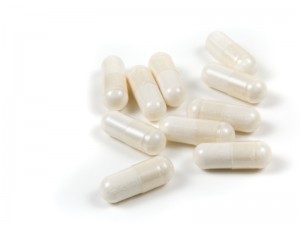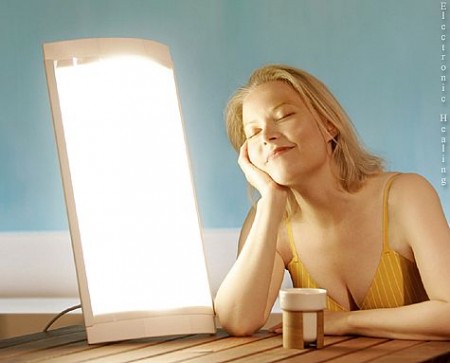Large Finnish Study Finds Lithium is Best at Preventing Re-Hospitalizations in Bipolar Disorder
A 2018 article in the journal JAMA Psychiatry reports that lithium and long-acting antipsychotic injections were most effective at preventing re-hospitalizations among people with bipolar disorder.
The study by Markku Lähteenvuo and colleagues included 18,018 Finnish patients with bipolar disorder. A national database contained information on any hospitalizations that occurred among the patients and what medications were dispersed to patients.
Among the participants, 54% (9,721 patients) were re-hospitalized at least once over a study period of 16 years. Medications associated with the smallest risk of re-hospitalization for psychiatric reasons were long-acting injections of risperidone, gabapentin, long-acting injections of perphenazine, and lithium carbonate.
When the researchers looked at hospitalizations for any cause (not just psychiatric illness), lithium was associated with the least risk of re-hospitalization, while benzodiazepines had the greatest risk, both for psychiatric re-hospitalization and re-hospitalization for any cause.
Long-acting injectable medications were associated with less risk of re-hospitalization compared to the identical medications delivered orally.
Lähteenvuo and colleagues concluded, “Lithium…should remain as the first line of treatment for bipolar disorder, after decades of underprescription.” They suggest that long-acting injectable medications may be a good alternative to prevent relapse in patients for whom lithium is unsuitable.
Editor’s Note: In addition to lithium’s ability to prevent depressions and manias, it also increases the volume of the hippocampus and protects against a diagnosis of dementia in old age. Lithium decreases the risk for suicide and also increases the length of telomeres, bits on the ends of DNA strands that protect them as they replicate, which are important to the maintenance of both physical and psychiatric health. When lithium is used cautiously to maintain doses below a given patient’s side effects threshold, it is very well tolerated by most individuals.
The Gold Standard in Bipolar Disorder Treatment
Last year our Editor-in-Chief Robert M. Post participated in a symposium at the annual meeting of the American Psychiatric Association on the best treatments for bipolar disorder. An article in Psychology Today describes some of the conclusions of the expert panel.
Lithium Treatment Lowers Suicide Rate in People with Bipolar Disorder
A large study that made use of a Swedish health database has shown that lithium reduces suicide rates in bipolar disorder. The study by researcher Jie Song and colleagues was published in the American Journal of Psychiatry in 2017.
The study included eight years of data from 51,535 people with bipolar disorder. During that time, there were 10,648 suicide-related events recorded, such as suicide attempts or completed suicides. The researchers compared suicide rates when patients were taking lithium to rates when they were off the drug, and found that lithium reduced attempted or completed suicide by 14%. Song and colleagues also looked at suicide rates for people taking valproate, and found that these were no better than when patients were off valproate, implying that treatment alone is not enough to reduce the suicide rate and the benefit is specific to lithium use.
Song and colleagues estimate that 12% of the suicide-related events among the patients included in the study might have been avoided if the patients had taken lithium for the entire study period. While there are other clinical considerations to make when selecting an appropriate treatment for a given patient, the researchers suggest that lithium treatment should be considered for patients with bipolar disorder who have expressed suicidal intentions or who are otherwise at risk for suicide.
In Danish Study, Higher Trace Levels of Lithium in Drinking Water in Certain Regions Do Not Seem to Prevent Bipolar Disorder
Previous studies have found that trace levels of lithium that occur naturally in the drinking water of certain regions are associated with lower rates suicide. Preliminary studies have also shown that lithium in drinking water is associated with lower dementia rates. The trace levels seen in drinking water are many hundreds of times lower than clinical doses of lithium prescribed for bipolar disorder, but they vary greatly according to locality.
A new study by researcher Lars Kessing and colleagues investigated whether chronic exposure to lithium in drinking water might protect against bipolar disorder, but found no evidence that this is the case in Denmark.
In an article published in the journal Bipolar Disorders in 2017, Kessing and colleagues describe findings from their analysis of data on 14,820 patients with a diagnosis of mania or bipolar disorder and (for each participant with bipolar disorder) 10 other age- and gender-matched control participants totaling 140,311. The researchers were able to look longitudinally at the participants’ exposure to trace levels of lithium in drinking water based on their municipalities of residence.
The investigators hoped to find evidence that greater exposure to lithium was associated with lower rates of bipolar disorder. Kessing and colleagues concluded that trace lithium levels higher than those in Denmark might be needed to find such a result.
Editor’s Note: Clinical studies of lithium treatment for children at high risk for bipolar disorder could help clarify whether even conventional therapeutic levels of lithium could reduce or delay the appearance of bipolar disorder.
Adipokines May Be the Link Between Mood Disorders and Obesity
 Researchers David J. Bond and Lakshmi Yatham think they may have identified why bipolar disorder and obesity occur so often together. In North America, more than 60% of people with bipolar disorder are overweight or obese, and obesity rates are 60% higher in people with bipolar disorder than in people without bipolar disorder.
Researchers David J. Bond and Lakshmi Yatham think they may have identified why bipolar disorder and obesity occur so often together. In North America, more than 60% of people with bipolar disorder are overweight or obese, and obesity rates are 60% higher in people with bipolar disorder than in people without bipolar disorder.
Bond and Yatham hypothesized that adipokines might be responsible for both bipolar disorder and obesity. Adipokines are cell signaling proteins that regulate both mood and appetite. Abnormal levels of adipokines in blood could cause both mood episodes and weight gain.
The researchers measured blood levels of five adipokines (leptin, adiponectin, resistin, adipsin, and lipocalin-2) in 53 young people with bipolar disorder. They found three interesting links between adipokines, mood, weight, and medications, which they reported in the Journal of Clinical Psychiatry in 2017.
The first finding was that low levels of leptin and adiponectin (adipokines with antidepressant properties) predicted a greater risk of depressive relapse over a 12-month period. The second finding was that high levels of leptin and adipsin predicted greater weight gain over a 12-month period. The third finding was that treatment with second-generation antipsychotics, which often leads to weight gain and other metabolic side effects, was associated with higher levels of resistin, an adipokine linked to type 2 diabetes.
The findings about leptin were particularly interesting, because leptin’s appetite-regulating effects change with a person’s weight. In the study, low leptin predicted depression, while high leptin predicted weight gain. In people of normal weight, low leptin predicts weight gain, while in overweight or obese people, high leptin predicts weight gain. Bond and Yatham suggest that leptin’s mood-regulating effects may be more consistent, with low leptin increasing depression risk regardless of weight.
These findings may help researchers find ways of treating mood episodes that do not encourage weight gain.
A Calculator of Risk for Bipolar Disorder in Youth
Daniella Hafeman of the University of Pittsburgh described a risk calculator for predicting an individual’s risk for bipolar disorder, which is available at www.pediatricbipolar.pitt.edu. Possible factors included in the risk calculation include a parent’s early age of onset of bipolar disorder, mood shifts early in life, a child’s anxiety or depression symptoms, later affective mood shifts, and new onset of subthreshold mania.
Editor’s Note: A “poor man’s” assessment of risk can also be of help to a family or clinician. There are four components. The first is genetic. Having one parent with bipolar disorder is a potent risk factor, and can be further magnified if the other parent also has a mood disorder. If three or more first degree relatives or three or more generations of first degree relatives have a mood disorder, this further increases risk four- to six-fold.
Perinatal vulnerability is another factor. Beyond these genetic vulnerabilities, a history of maternal toxoplasmosis or a viral infection during pregnancy, or the infant being noticeably underweight at birth can contribute to bipolar risk.
Childhood adversity also contributes to vulnerability to early onset of bipolar illness. A history of psychosocial stress in the child’s early years, such as abuse or abandonment, can be an added risk factor.
Prodromal or preliminary symptoms are also a risk factor. The development of an anxiety or depressive disorder, a disruptive behavioral disorder, or a bipolar not-otherwise-specified diagnosis (BP-NOS, used to describe manic symptoms of short duration) further increases risk. In studies by David Axelson and Boris Birmaher, 50% of children with an initial diagnosis of BP-NOS developed full-blown bipolar I or II illness upon several years of followup if there was a family history of bipolar disorder. About one-third converted to full bipolar disorder if there was no family history of bipolar disorder.
Thus, if a child has three or all four types of risk factors, their risk would be substantial. In this case, one might consider attempts at prevention. This could include a good diet rich in omega-3 fatty acids, regular exercise, joining a school sports team, developing good sleep habits, playing a musical instrument, and engaging in something akin to family focused therapy. Family focused therapy emphasizes psychoeducation, good communication skills, and problem solving. Attending to and treating parents’ symptoms and building a support system for both parents and the child can also help.
While these endeavors are not a guarantee to prevent the onset of more severe illness, they are all health-promoting in general and have few downsides.
Intranasal Ketamine for Bipolar Disorder
 An in-press article due out in January 2018 by Demitri F. Papolos and colleagues in the Journal of Affective Disorders reports that intranasal ketamine delivered every three to four days reduced symptoms of bipolar disorder in 45 teens (aged 16 years on average). The teens treated in one private practice had the ‘fear-of-harm’ subtype, which in addition to bipolar symptoms is characterized by treatment resistance, separation anxiety, aggressive obsessions, disordered sleep, and poor temperature regulation.
An in-press article due out in January 2018 by Demitri F. Papolos and colleagues in the Journal of Affective Disorders reports that intranasal ketamine delivered every three to four days reduced symptoms of bipolar disorder in 45 teens (aged 16 years on average). The teens treated in one private practice had the ‘fear-of-harm’ subtype, which in addition to bipolar symptoms is characterized by treatment resistance, separation anxiety, aggressive obsessions, disordered sleep, and poor temperature regulation.
The repeated administration of ketamine produced long-lasting positive results, improving bipolar symptoms as well as social function and academic performance. Many participants reported via survey that they were much or very much improved after being treated for durations ranging from 3 months to 6.5 years. Side effects were minimal and included sensory problems, urination problems, torso acne, dizziness, and wobbly gait.
The ketamine was delivered to alternating nostrils via 0.1 ml sprays that included 50–200 mg/ml of ketamine in 0.01% benzalkonium chloride. Patients were instructed to increase the dosage just up until it became intolerable and then repeat the last tolerable dose every three to four days. Final doses ranged from 20–360 mg. The mean dose was 165 mg (plus or minus 75 mg) delivered every 3 days.
Papolos and colleagues called for placebo-controlled clinical trials based on the positive results from this open study.
Inflammation Predicts Poor Response to Sleep Deprivation with Light Therapy
A 2017 article by Francesco Benedetti and colleagues in the Journal of Clinical Psychiatry reports that people with bipolar depression who have higher levels of certain inflammatory markers may have a poor antidepressant response to the combination of sleep deprivation and light therapy, compared to those with lower levels of inflammation.
The study included 37 participants with bipolar disorder who were in the midst of a major depressive episode. Of those, 31 participants (84%) had a history of poor response to antidepressant medication. The patients were treated with three cycles of total sleep deprivation and light therapy within one week, a combination that can often bring about a rapid improvement in depression.
Depression improved in a total of 23 patients (62%) following the therapy. Blood analysis showed that compared to those who had a good response, the non-responders had higher levels of five intercorrelated inflammatory markers: IL-8, MCP-1, IFN-gamma, IL-6, and TNF-alpha. Those with higher body mass index had more inflammation, indirectly decreasing response to the therapy.
Midday Bright Light Therapy Improved Bipolar Depression
A study by Dorothy K. Sit and colleagues published in the American Journal of Psychiatry in 2017 found that delivering bright white light therapy to patients with bipolar depression between the hours of noon and 2:30pm improved their depression compared to delivering inactive dim light, and did not cause mood switches into mania. The study included 46 patients with moderate bipolar depression, no hypomania and no psychosis.
The active therapy group was exposed to broad-spectrum bright white fluorescent light at 7,000 Lux while the inactive group received dim red light at 50 Lux. Both groups were instructed to sit 12 inches from the light and face it without looking directly at it. The therapy began with 15-minute afternoon sessions and increased to 60 minutes per day by 4 weeks. Participants were assessed weekly. Remission rates increased dramatically in the active group beginning in the fourth week. At weeks 4 through 6, the remission rate for those in the active bright light group was 68.2% compared to only 22.2% in the dim light group.
Mean depression scores were better in the treated group, as were global functioning and response rates.
Some participants were taking antidepressants concurrently, and these participants were evenly distributed across the two study groups.
An earlier pilot study by the same researchers had found that bright light therapy delivered in the morning was followed by some hypomanic reactions or bipolar cycling. The midday sessions did not cause any mood switching.
Bright light therapy is often used to treat seasonal affective disorder (SAD) using a 10,000 Lux light box. This study took place mostly during the fall and winter months.
Editor’s Note: Bright light therapy is generally safe and boasts a high remission rate. Light boxes can be acquired without a prescription and are portable and easy to use. Midday light may have the best results and the least risk of provoking a mood switch into mania.
Making Lithium Treatment More Tolerable For Patients
 In a slideshow at Psychiatric Times, Chris Aiken describes seven ways to improve lithium’s tolerability. Since many researchers, including BNN Editor-in-Chief Robert M. Post, have suggested that lithium should be used more often as a treatment for bipolar disorder, ways of making its side effects more manageable are of great interest. Here we summarize Dr. Aiken’s seven points and add a few perspectives of our own.
In a slideshow at Psychiatric Times, Chris Aiken describes seven ways to improve lithium’s tolerability. Since many researchers, including BNN Editor-in-Chief Robert M. Post, have suggested that lithium should be used more often as a treatment for bipolar disorder, ways of making its side effects more manageable are of great interest. Here we summarize Dr. Aiken’s seven points and add a few perspectives of our own.
Aiken writes that “when it comes to the side effects that matter most to patients—sedation, weight gain, and cognition—lithium’s tolerability ranks right behind lamotrigine.” In fact, lithium plus lamotrigine is an excellent combination, as lithium excels at preventing manias while lamotrigine excels at depression prevention.
Post’s philosophy is that many of lithium’s side effects can be avoided in the first place through judicious dose titration. He suggests gradually increasing dosage, and stopping before side effects become difficult, or reducing a dosage that has already become a problem. The idea is to avoid lithium side effects even if blood levels of lithium remain below clinically therapeutic levels. Post suggests using lithium at whatever dose is not associated with side effects.
Many of lithium’s positive therapeutic effects emerge at low doses, and if this improvement is insufficient, the rest of the needed efficacy can be achieved by adding other medications. As noted above, lamotrigine is a good option for break-through depression, as is lurasidone. For breakthrough mania, the mood stabilizers valproate and carbamazepine or an atypical antipsychotic can be added to lithium.
A little-appreciated option for enhancing lithium’s mood stabilizing effects is nimodipine, a dihydropyridine calcium blocker. It has both antimanic and antidepressant efficacy without lithium’s side effects. Research showed that a year on the combination of lithium and nimodipine was more effective than a year of either drug alone.
If a patient taking lithium experiences a tremor at a dose that is not fully effective, nimodipine can be added in order to lower the lithium dose enough to eliminate the tremor.
Nimodipine specifically blocks the calcium influx gene CACNA1C that has been repeatedly been associated with the vulnerability to bipolar disorder and depression.
If side effects do occur on lithium, they can often be managed. The following suggestions are adapted from Aiken’s article with input from Post. Read more







